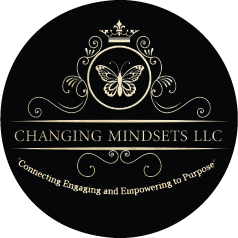Accept is a verb which means acceptance is an active process. It must be practiced consciously. There are a few things one needs to know about acceptance. Acceptance does not mean liking, wanting, choosing or supporting. By struggling against the pain-by resisting and rejecting it- we create undue suffering. It does not mean that you have chosen or endorse what you are accepting. It does not mean you like your anxiety, want your anger and hurt, want your chronic pain, or support an injustice that has happened to you. Rather, you’re choosing to allow it to be there when you can’t change it in that moment. To make space for it. To give yourself permission to be as you are, feel what you feel, or have experienced what you’ve experienced without creating unproductive shame or anxiety. The pain might still be there, but some of the suffering will be alleviated.
Remember that accept is a verb. It’s an active process, one that must be practiced consciously. It can require effort at times (or most of the time, at least initially). It can be frustrating at times. But, like creating a clearing in a grass field by walking the same path many times, every time you practice acceptance toward something, you create and strengthen neural pathways in your brain, facilitating ease in the future. t’s natural to vacillate back and forth between feelings of acceptance and feelings of resistance. Make space for the spectrum of experience, and notice your internal critic get quieter.
Acceptance doesn’t mean that you can’t work on changing things. Many people believe that acceptance is a sign of apathy. Passivity. Giving up. Relinquishing agency. However, this doesn’t have to be the case. Practicing acceptance does not necessarily mean you won’t be able to make a change. You can accept your body and still change it, accept your emotions and acknowledge their impermanence, and accept your behavior one day when you might change it tomorrow.
Acceptance doesn’t mean you’re accepting it’s going to be that way forever.
A decade later, the relationship I now have with my mom is galaxies different from what it used to be. I wouldn’t say that’s due entirely to acceptance, but it does show that acceptance doesn’t always mean whatever you’re accepting will be that way forever. Try to focus your acceptance on the present, alongside an open and realistic gaze at the future. Focusing too much on the present can be counterproductive, as a large part of acceptance involves letting go of the desire that things will change—detaching from hope that, in some cases, creates suffering. But sometimes imagining practicing acceptance forever can seem daunting, overwhelming, or impossible, so try to find that sweet spot where you’re accepting the current moment but not under the pretense that things will change in the future.
We can practice acceptance toward our experience, people, appearance, emotions, ideas, and more.
Acceptance can be practiced in all areas of your life: You can exercise it toward your current experience or reality, others’ beliefs or ideas, your appearance, your emotions, your health, your past, your thoughts, or other individuals. Again, this doesn’t mean you necessarily endorse whatever it is that you’re accepting in these realms; rather, you recognize that you can’t change the current nature of this exact moment, and accepting manages anxiety and helps calm.
I encourage you to consider how acceptance has benefited your life in the past, and how you can practice it more in the present. Being able to understand that acceptance is one of the basic foundations to allowing one to transform from past to present and future reality.
Yours in Your Journey to Personal Healing and Success
Monica Squires, CARC

